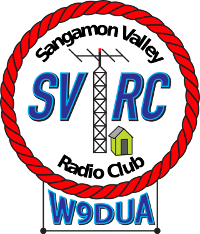History
The concept of sending telegraph messages without connecting wires was around for some 50 years before Italian inventor Guglielmo Marconi created a practical system of “wireless telegraphy,” one using a relatively simple oscillator composed of a spark-producing radio transmitter coupled with a wire placed above ground, a receiver, and a telegraph key to transmit long and short pulses corresponding to the dots and dashes of the Morse code (developed in 1836) and a telegraph register to record the dots and dashes on a roll of paper tape.
In fact, the first “wireless” radio operators were land-line telegraphers who left their offices to go to sea or to man coastal stations. They brought with them their language (Morse code) and much of the tradition of their older profession.
Instead of having equipment that used vacuum tubes (which were introduced after World War I) and later transistors to transmit on specific frequencies, in those early days, spark gap messages soaked up all of the radio broadcast band width. That meant that government stations, ships, coastal stations and an increasingly numerous group of amateur operators all competed for time and signal supremacy in each other's receivers. To the dismay of professional telegraphers, many of the amateur stations were very powerful. Two amateurs, working each other across town, could effectively jam all the other operations in the area.
And while there are several theories on this, it is said that the use of the term “ham” to describe those early amateur radio operators was a derogatory term coined by frustrated commercial operators, a short version of “ham fisted,” meaning the operator couldn’t send Morse code very well. Amateurs, possibly unfamiliar with the real meaning of the term, picked it up and applied it to themselves. Over the years, the original meaning completely disappeared. Today, the terms “ham,” “ham radio,” and “ham radio operator” are used interchangeably to refer to amateur radio and amateur radio operators in the United States and world-wide.
The havoc caused by use of Marconi’s spark transmission system on the ill-fated Titanic prompted Congress to pass the Radio Act of 1912 restricting private stations to wavelengths of 200 meters of shorter, “short wave.” It also marked the beginning of U.S. federal licensing of amateur radio operators and stations. The start of World War I in 1916 brought a halt to all amateur radio station operations that were lifted at the end of the war, in October 1919. (Ham radio operations were also curtailed during World War II).
In 1934 the Federal Communications Commission was created by Congress at at the request of President Franklin D. Roosevelt, and with it brought reorganization of Amateur Radio Licensing and a recognition that amateur radio operators fill the need for a pool of experts who can provide backup during emergencies. It also acknowledges the ability of the hobby to advance the communication and technical skills of radio and to enhance international goodwill. Over the years, countless lives have been saved by amateur radio operators here and world-wide, acting as emergency communicators to render aid, whether it's during an earthquake, tornado, hurricane, or other major disaster.
Amateur Radio Now
Today, amateur radio operators are allocated 26 radio bands -- specific groups of frequencies-- spaced from 1.8 Megahertz, which is just above the broadcast radio frequencies, all the way up to 275 Gigahertz. Depending on which band they use, amateur radio operators can talk across town, around the world or out to satellites in space. Hams can even bounce signals off the moon.
There is a great variety of ways that Amateur Radio operators are able to communicate. Using voice is just one. Even though it is no longer required in order to obtain an amateur radio license, Morse code is still widely used. Packet, Radio Teletype (often called RTTY), and PSK are three more ways to communicate. Even faster transmissions are being developed using methods which can send almost any form of digital data. Hams also use television to send pictures over the air.
To get a license, you must pass a written FCC exam that tests your knowledge of basic regulations, operating practices and electronics theory.
